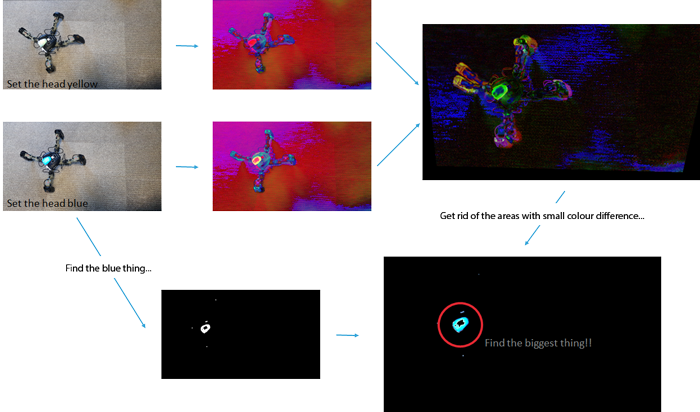MekaMon is a quadrupedal consumer robot created by Reach Robotics, which was released in Apple Stores, Amazon and others. The robot is controlled by a companion app, which was compatible with both Android and iOS devices. The app included a number of augmented reality game modes, embedding virtual game elements around the physical MekaMon.
Key Technologies
Unity | C# | OpenCV | ARKit | ARCore | ARFoundation | Python | Tensorflow
How Did It Work?
Detection and Tracking
- We need to know where the MekaMon is to interact with it.
- Tracking is fairly easy once we have a confident initial location.
- Flash the head and look for the difference in colour.
- Images from different views are aligned using back-projection, since we know the camera’s location in the world from odometry (AR Foundation / ARKit / ARCore).
- Tracking then involves “following the blue thing”, with some classification to check the position and shape of the object is correct.

Smarter Detection: Cascades
- Compared LBP and Haar Cascades with boosted classifiers to detect MekaMon body
- Worked well if bootstrapped with rough location from previous frame.
- Unreliable in cluttered scenes.
Segmentation: Investigating Mask-RCNN for AR
- Head tracking only provides coarse location, fine for basic interaction, but not enough for immersive scenes (e.g. occlusions, etc.).
- Researched into deep-learning approaches for segmentation of MekaMon in AR scenes.
- Generated a large, varied simulated dataset (~40k images) using Unity.
- Also produced a much smaller, hand-labelled dataset (~115 images).
- Initial investigation uses Mask-RCNN, ResNet backbone, transfer learnt on simulated data and fine-tuned on hand labelled data.
- Results were promising, although slow (1 FPS on a desktop).
- Still TODO: Investigate a quantised MobileNet backbone on TF-Lite.